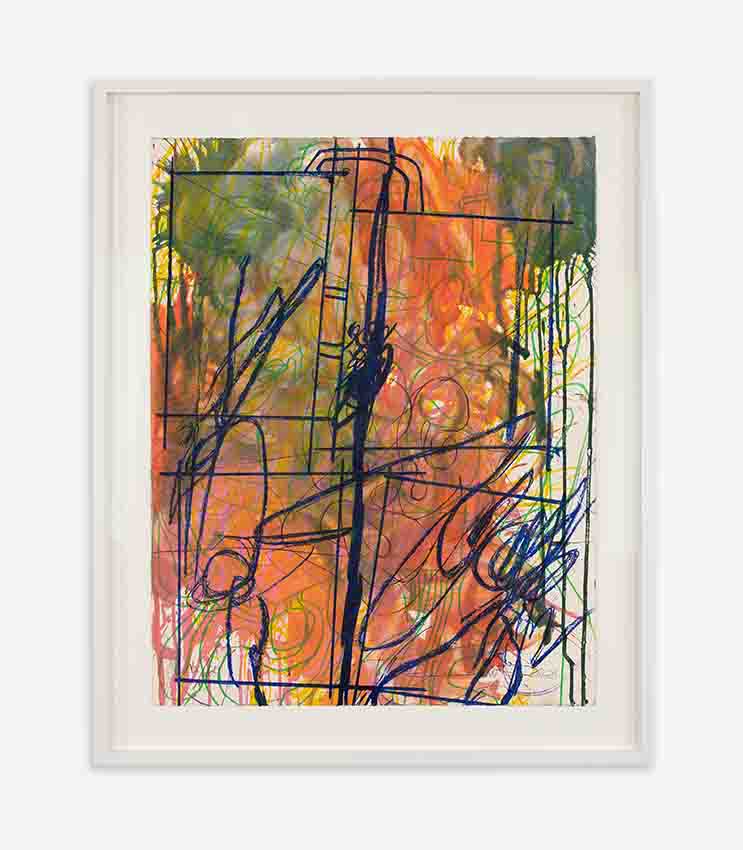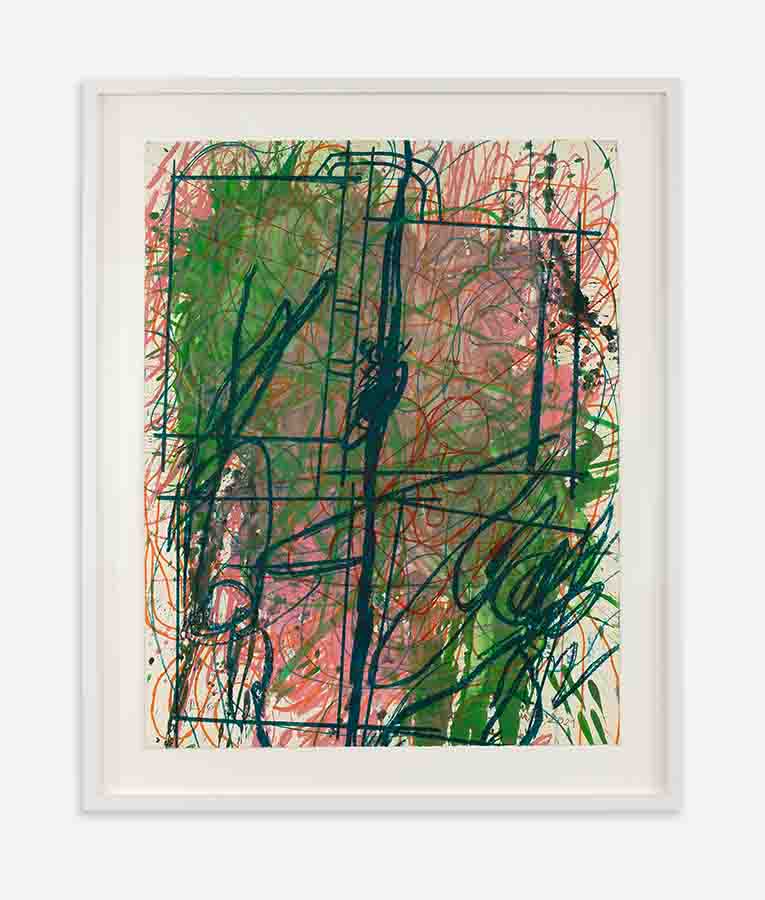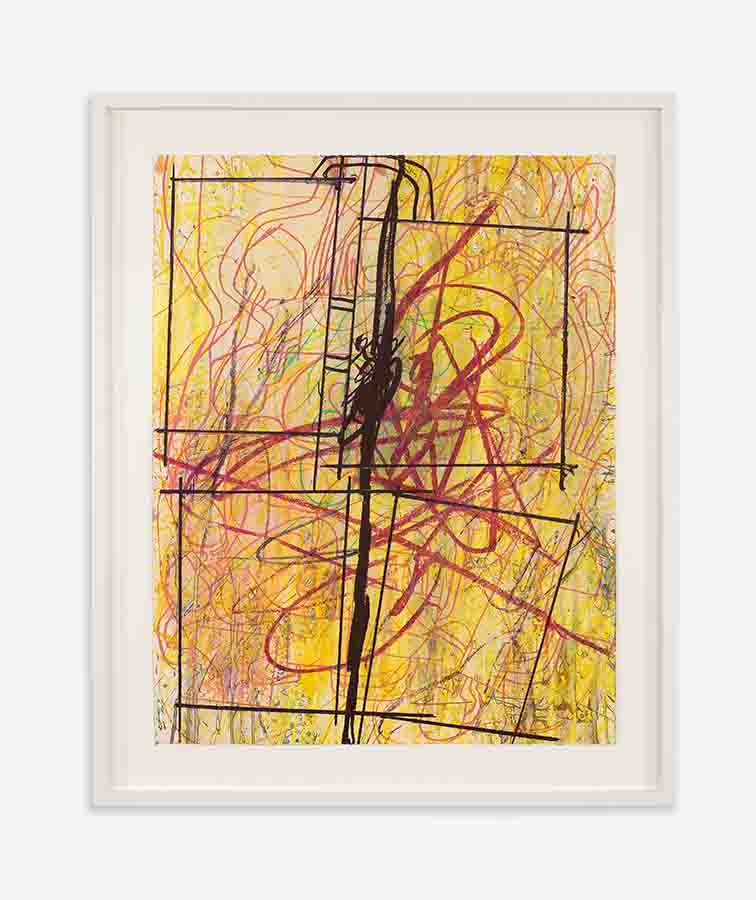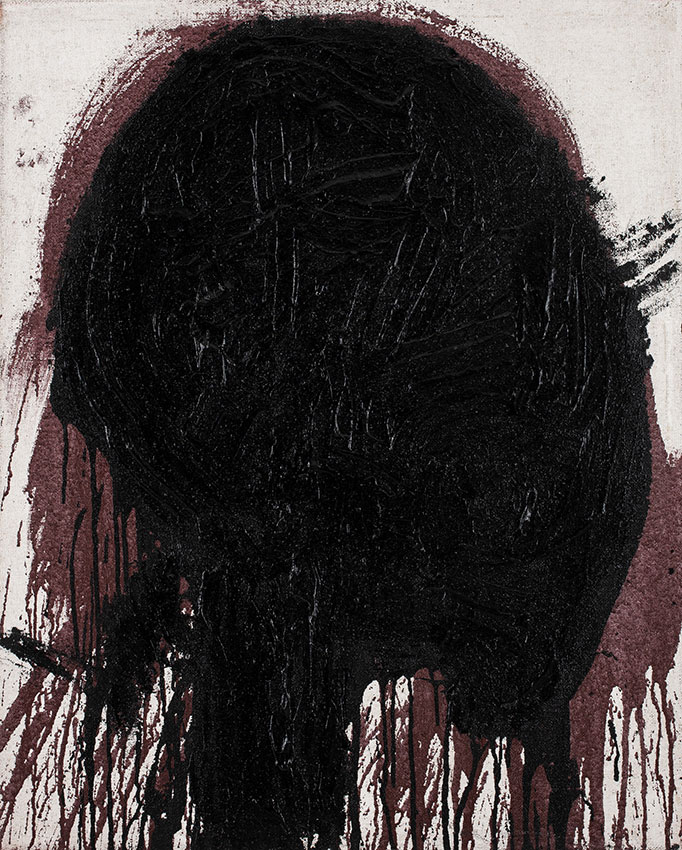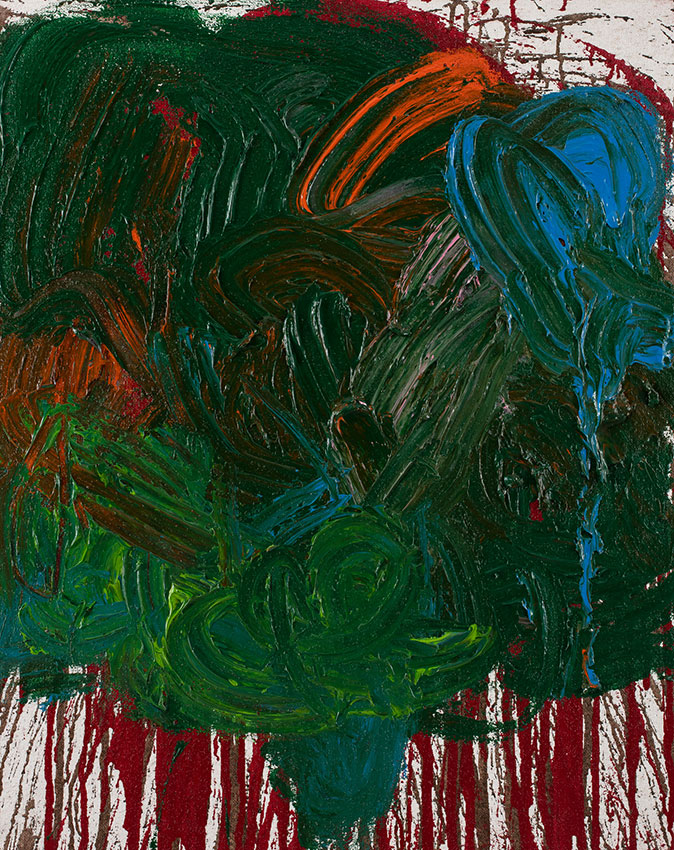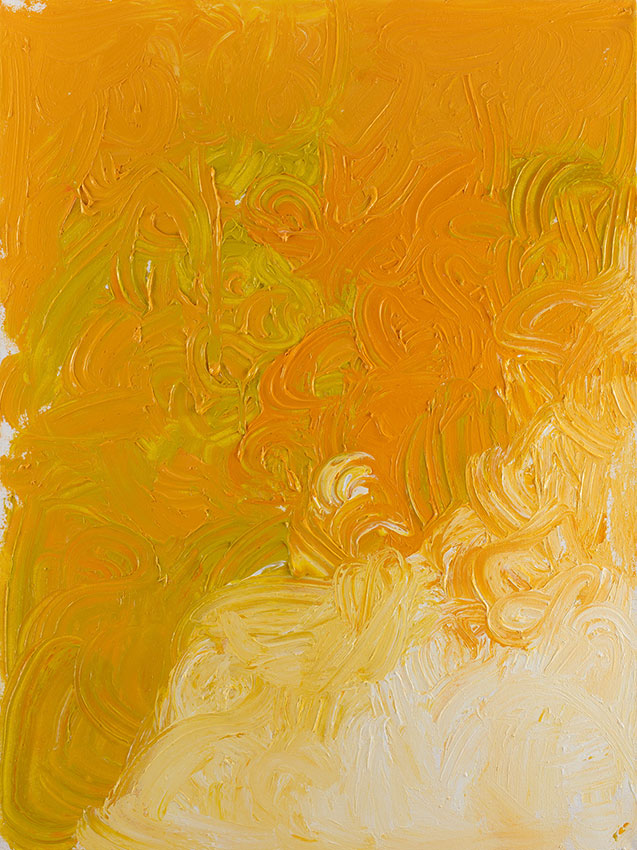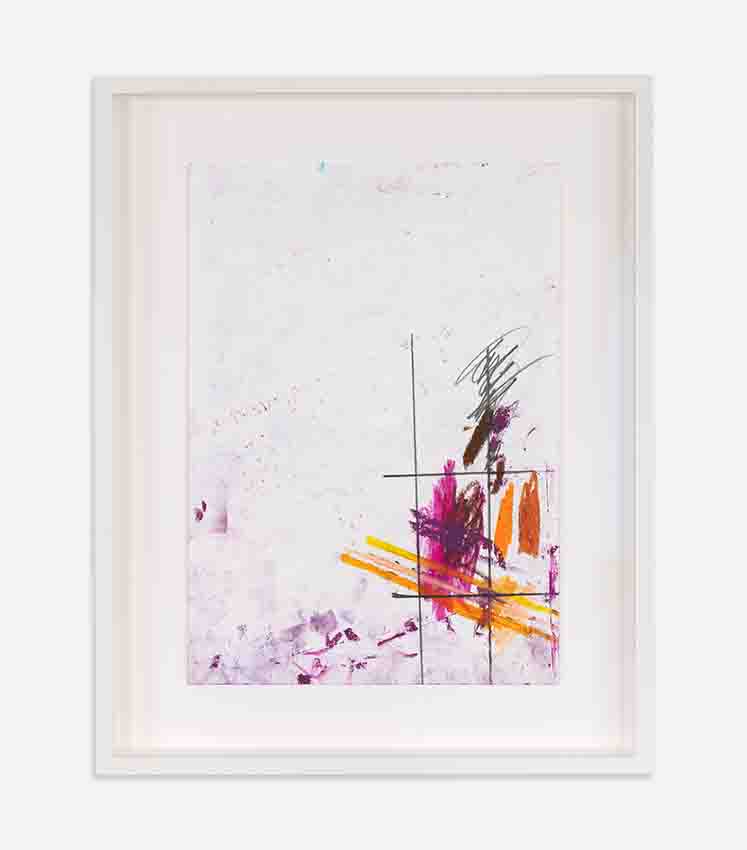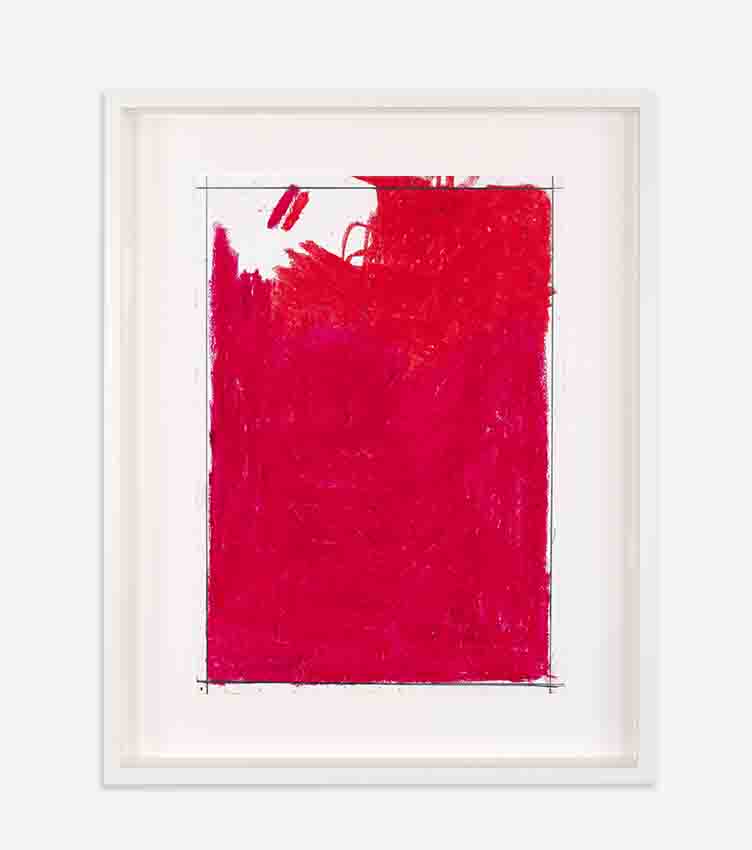ART CITIES: Berlin-Hermann Nitsch
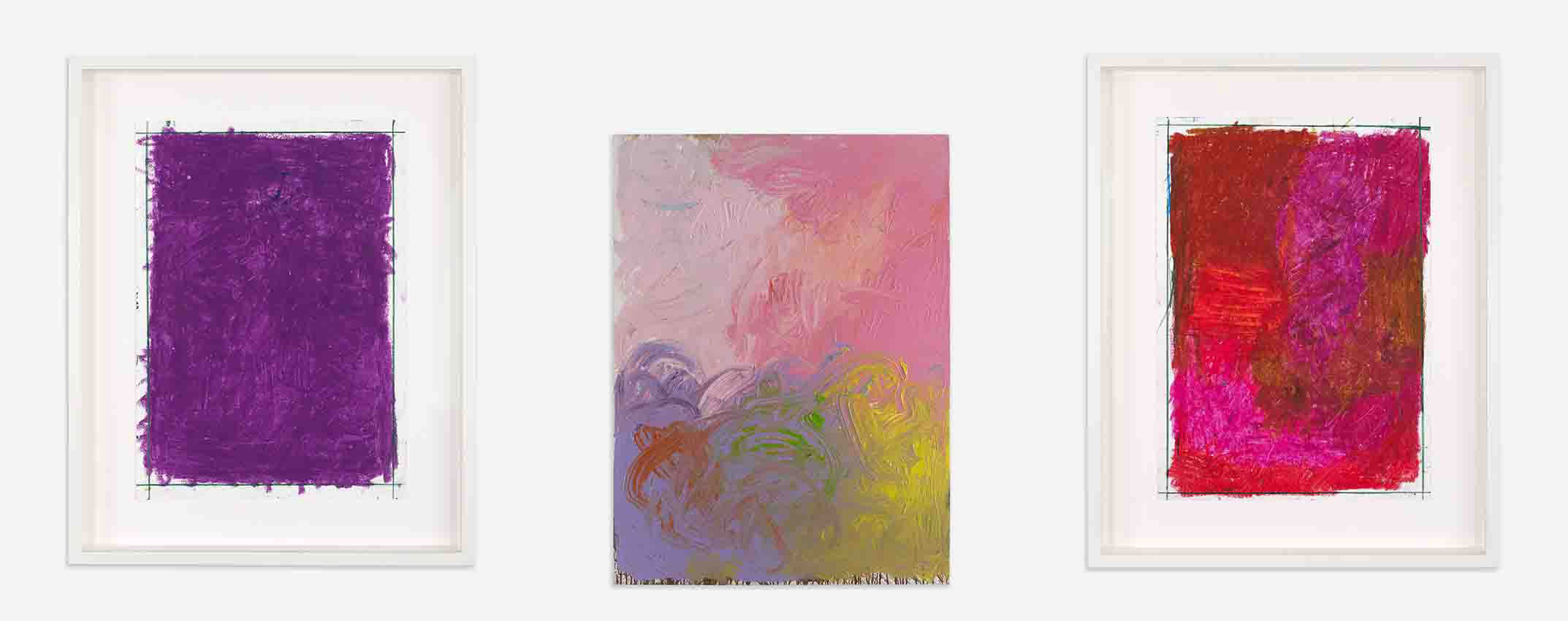 A key figure in Viennese Actionism, known as perhaps the most radical art movement of the 1960’s, Hermann Nitsch’s practice assembles a total work of art analogous to Wagner’s Gesamtkunstwerk – an orgiastic theatre which engages all the senses. His paintings have always been a central element of these performances and this practice operates according to the same principle of total sensorial submersion and synaesthesia.
A key figure in Viennese Actionism, known as perhaps the most radical art movement of the 1960’s, Hermann Nitsch’s practice assembles a total work of art analogous to Wagner’s Gesamtkunstwerk – an orgiastic theatre which engages all the senses. His paintings have always been a central element of these performances and this practice operates according to the same principle of total sensorial submersion and synaesthesia.
By Efi Michalarou
Photo: Peres Projects Archive
Hermann Nitsch’s solo exhibition comprises of new paintings and drawings by the artist. This group of works is striking for the opulent bright colors and curving shapes. The physicality of the gesture is apparent, and the steady lines play with light and color to manifest harmonic compositions. The brushstrokes are reminiscent of the petals on a flower, and leaves crevices and swells of paint in their wake. As the artist says “With this exhibition I wish to get exhilaratingly high on the colors of the flowers and fresh salubrious air. all these colors bring about honey”. Nitsch began his training wanting to become a church painter. Spiritual themes remain a central drive of his works – which are existentialist reflections on human experience. The artist has described his practice as thematizing both death and resurrection. These new works draw particularly from vegetal imagery and color, emphasizing the latter. The audience is subsumed by Nitsch’s works which celebrate the materiality and the pleasure derived from the experience of being a body: “it is with an incredibly great sense of joy to be able to concentrate on the floral vibrancy of the smeared paint substance in the works. i am still capable of producing as an eighty year-old. more than ever, resurrection is a principle to me”.
Hermann Nitsch was born in Wien in 29/8/1938. While studying graphic illustration, he became interested in religious art. He made copies from Rembrandt’s “100 Gulden Blatt” and “Christ Crucified”, and from other religious themes by artists such as Tintoretto and El Greco. He was strongly influenced by Cézanne, Klimt and Munch. From 1957 onwards, the depiction of Dionysian revelry and ceremonies began to feature in his work. In 1957, Hermann Nitsch conceived an idea for a radical theatre, which he called the “Orgien Mysterien Theater”. The Theatre took its shape from ideas about Aristotelian catharsis, Freudian psychology, conventional theatre and Dionysic orges. It is an attempt to create a Gesamtkunstwerk, a ‘total art’, a mystical experience that involves all senses. The first performances of the “O.M. Theatre” consisted of Hermann Nitsch and friends using animal carcasses, entrails and blood in a ritualistic way. Cloths, bandages and other fabrics used in these performances introduced Nitsch to the idea of making paintings. 1960 saw the first exhibition of his “Aktion” paintings in Wien. In 1961 he organized with Günter Brus, Alfons Schillin g, Otto Muel and Adolf Frohner, the artistic group “Wiener Aktionismus”, Art in action, bringing to Austria the expressionist style together with dramatic themes and gestural painting. In 1962, together with Otto Muehl and Adolf Frohner, Nitsch wrote the “Blood Organ Manifesto” which today can be regarded as the first theoretical concept of Viennese Actionism.The first Action was called “Blood Organ” and was represented in 1962 in Wien. It lasted 30 minutes. A man was bound and covered with a white sheet and the artist throw on him blood which consequently slide on the ground and the sheet. This way of making artworks is re utilized by the artists in his future artworks “Shuettbitter” or poured paintings. Nitsch considered that theater, sculpture and paintings are strictly linked. In his performances he discovered always hidden and pent-up instincts. During the period in which the artist lived in Wien, his use of taboo images put him out of favour with the authorities. His “Aktions” were closed down by the police. Hermann Nitsch spent some time in prison for blasphemy and provoking scandals. In 1968 Jonas Mekas invited him to New York, where he met the Fluxus performance artists. He staged “Aktions” in the streets of New York, as well as at the Judson Church & Cinematheque. In 1971 Hermann Nitsch bought Prinzendorf castle in the wine-producing area of northern Austria, so that it might become a centre for the activities of the “O.M. Theatre”. During that time he staged performances and exhibitions in Italy, France, the US and Germany. The artist start to compose himself some music that became increasingly prominent in his performances. In 1972 he participated in Documenta V, Kassel, and staged “Aktions” at the Mercer Center and Everson Museum of Art. In 1984, Hermann Nitsch staged a performance that lasted three days and three nights at Prinzendorf. In 1989 he began teaching at the Arts Academy in Frankfurt and in the mid-90’s he co-directed and designed the set for the opera Herodiade by Jules Massenet at the Wien State Opera. In 1996 he performed an “Aktions” in the wine-yards of San Martino (Naples), and in 1998 staged the 6-day play in Prinzendorf, an “Aktions” that Hermann Nitsch sees as the greatest achievement of his career. In 2005 he won the Austrian State Prize at Burgteather in Wien for the Aktion 122. In 2007 Mistelbach opened a dedicated museum: the Hermann Nitsch Museum and in 2008 Fondazione Morra in Naples opened the Museum Archive Laboratory for Contemporary Arts Hermann Nitsch.
Photo: Artworks from the exhibition “Hermann Nitsch”, Peres Projects-Berlin, 2022
Info: Peres Projects, Karl-Marx-Allee 82, Berlin, Germany, Duration: 14/1-11/2/2022, Days & Hours: Mon-Fri 11:00-18:00, https://peresprojects.com
